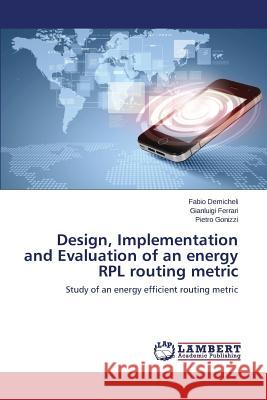Design, Implementation and Evaluation of an Energy Rpl Routing Metric » książka
Design, Implementation and Evaluation of an Energy Rpl Routing Metric
ISBN-13: 9783848419685 / Angielski / Miękka / 2014 / 88 str.
Design, Implementation and Evaluation of an Energy Rpl Routing Metric
ISBN-13: 9783848419685 / Angielski / Miękka / 2014 / 88 str.
(netto: 170,37 VAT: 5%)
Najniższa cena z 30 dni: 178,89
ok. 10-14 dni roboczych
Bez gwarancji dostawy przed świętami
Darmowa dostawa!
The Internet of Things is the new paradigm arise in the last years, based on the idea that everyday object can connect to the Internet and exchanging information with other objects and people. This is possible thanks to the Smart Objects. which are the base of IoT: they are small wireless devices equipped with a tiny sensor, and generally are battery powered. The Internet Engineering Task Force (IETF) formed a new Working Group named Routing Over Low power and Lossy networks (ROLL) to standardize an IPv6-based routing protocol for IP smart object networks; the result was the IPv6 Routing Protocol for Low power and lossy networks (RPL). To increase lifetime of the devices and then to reduce the energy consumption, radio transceiver must be turned off as long as possible; thus, a duty cycling mechanism has to be used. In this work we use Contiki, an operating system designed for smart objects applications, and the RPL implementation on it, to design a RPL routing metric with nodes with different duty cycle values, based on the energy consumption of the nodes. The purpose is to study and evaluate it, and comparing it with ETX, the default routing metric implemented in Contiki.











